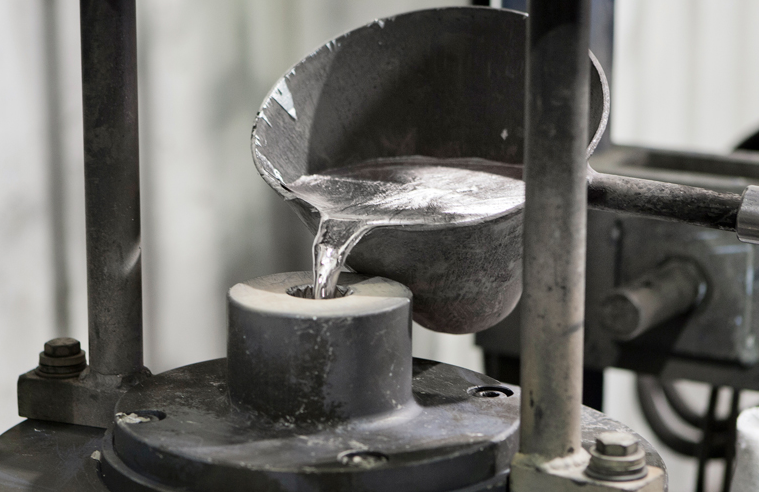Gravity Casting Vs Pressure Die Casting
Gravity casting and pressure die casting are both processes used for casting non-ferrous metals such as aluminum, magnesium, zinc, and copper. While both methods involve melting the metals, they differ in how the molten metal is introduced into the mold cavity.
In gravity casting:
The liquid metal is initially contained in a vessel.
It is then poured from the top hole of the cavity.
Gravity naturally pulls the metal downward, allowing it to spread within the cavity.
After solidification, the finished part is removed from the mold.
On the other hand, in pressure die casting:
The liquid metal is poured into a shot chamber.
A plunger mechanism then forcefully injects the metal into the cavity.
The pressure exerted by the plunger aids in distributing the metal evenly within the cavity.
Once solidified, the component is ejected from the mold.
The key distinction between the two processes lies in the fact that gravity casting relies solely on gravitational force to spread the molten metal, whereas pressure die casting involves the use of external pressure to facilitate metal distribution.
Comparison among HPDC, LPDC, and Gravity Casting
Pressure die casting encompasses two main types: high-pressure die casting (HPDC) and low-pressure die casting (LPDC). These variations exhibit differences in various aspects, as summarized in the table below:
| Gravity Casting | HPDC | LPDC | |
|---|---|---|---|
| Cost of Mold, Mold Life | Very Low, Long | High, Short | Low, Long |
| Rate of Production, Production Process | Low, Simple | Very High, Complex | Medium, Simple |
| Heat-Treatment | Possible | Not Possible | Possible |
| Components’ Porosity | Very Low | High | Low |
| Surface Smoothness | Low | High | High |
| Post-Production Machining | High | Medium | Low |
It's worth noting that gravity casting can be performed using either automatic or manual methods. The properties listed for gravity casting in the table apply to both methods, and therefore, the comparison is presented without differentiation between them.
Why Pressure Die Casting Mold Costs More Than Gravity Die Casting Mold?
The cost difference between pressure die casting molds and gravity die casting molds primarily arises from the distinct operational mechanisms and complexity involved in each process.
Pressure die casting necessitates the application of external force to push the liquid metal into the mold cavity. This requirement for external pressure entails additional mechanisms within the equipment, such as plunger systems, to generate the necessary force. Consequently, the manufacturing and maintenance of pressure die casting molds involve intricate engineering and precise machining to accommodate these mechanisms, contributing to higher production costs.
Conversely, gravity die casting relies solely on gravitational force to fill the mold cavity with molten metal. The absence of external pressure requirements simplifies the casting process, resulting in less complex machinery and fewer components in the mold design. As a result, gravity die casting molds typically entail lower manufacturing and maintenance costs compared to their pressure die casting counterparts.
When to Choose Gravity Die Casting Over Pressure Die Casting?
Small-Scale Production: Gravity die casting is preferable for small-scale production runs due to its simpler setup and lower initial investment requirements.
Priority on Part Strength: If the primary concern is the mechanical strength of the cast parts rather than production speed, gravity die casting may be favored. However, it's important to note that gravity casting often results in inferior surface finishes, which may necessitate additional post-machining operations to achieve desired tolerances and aesthetics.
Simple Part Designs: Gravity die casting is suitable for parts with straightforward designs lacking intricate features such as undercuts or variable wall thicknesses. The simplicity of the casting process aligns well with the requirements of such parts, offering cost-effective production solutions.
Dongrun Casting have 20000 square meters facility houses and 200 production & test equipment, From quotation and tooling design to casting and finished machining, we can work with you at every stage. We serves wide range of industries-from Fortune 500 corporations to small and midsize OEMs. Our products includes: Automotive&Trucking, Electric Utility & Communications, Metering System, Hydraulic Industry, Medical Devices, Lighting, Fuel and Gas Pressure, Furniture parts.
More Details : www.dongruncasting.com
